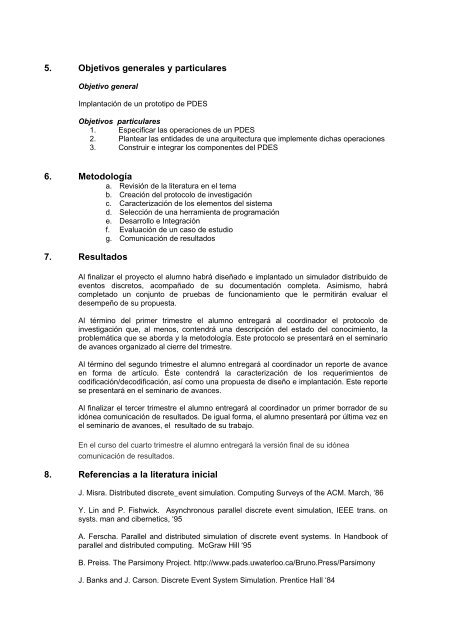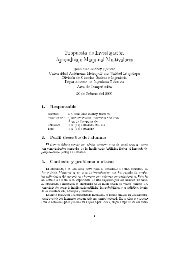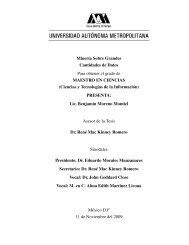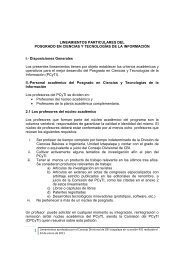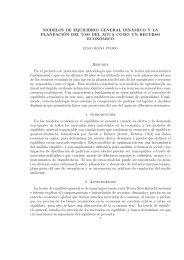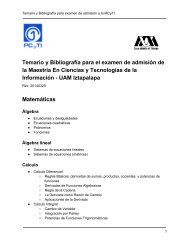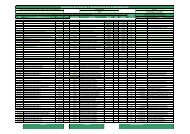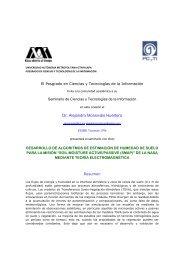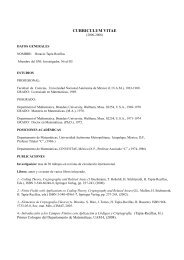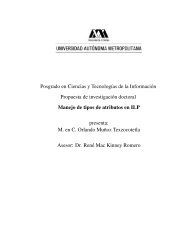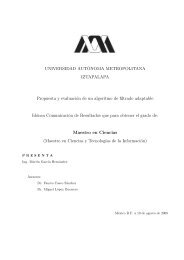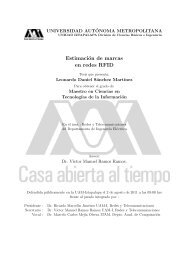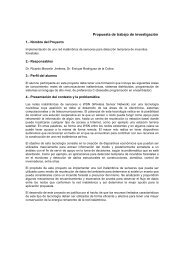Propuesta de trabajo de investigación
Propuesta de trabajo de investigación
Propuesta de trabajo de investigación
You also want an ePaper? Increase the reach of your titles
YUMPU automatically turns print PDFs into web optimized ePapers that Google loves.
5. Objetivos generales y particulares<br />
Objetivo general<br />
Implantación <strong>de</strong> un prototipo <strong>de</strong> PDES<br />
Objetivos particulares<br />
1. Especificar las operaciones <strong>de</strong> un PDES<br />
2. Plantear las entida<strong>de</strong>s <strong>de</strong> una arquitectura que implemente dichas operaciones<br />
3. Construir e integrar los componentes <strong>de</strong>l PDES<br />
6. Metodología<br />
a. Revisión <strong>de</strong> la literatura en el tema<br />
b. Creación <strong>de</strong>l protocolo <strong>de</strong> investigación<br />
c. Caracterización <strong>de</strong> los elementos <strong>de</strong>l sistema<br />
d. Selección <strong>de</strong> una herramienta <strong>de</strong> programación<br />
e. Desarrollo e Integración<br />
f. Evaluación <strong>de</strong> un caso <strong>de</strong> estudio<br />
g. Comunicación <strong>de</strong> resultados<br />
7. Resultados<br />
Al finalizar el proyecto el alumno habrá diseñado e implantado un simulador distribuido <strong>de</strong><br />
eventos discretos, acompañado <strong>de</strong> su documentación completa. Asimismo, habrá<br />
completado un conjunto <strong>de</strong> pruebas <strong>de</strong> funcionamiento que le permitirán evaluar el<br />
<strong>de</strong>sempeño <strong>de</strong> su propuesta.<br />
Al término <strong>de</strong>l primer trimestre el alumno entregará al coordinador el protocolo <strong>de</strong><br />
investigación que, al menos, contendrá una <strong>de</strong>scripción <strong>de</strong>l estado <strong>de</strong>l conocimiento, la<br />
problemática que se aborda y la metodología. Este protocolo se presentará en el seminario<br />
<strong>de</strong> avances organizado al cierre <strong>de</strong>l trimestre.<br />
Al término <strong>de</strong>l segundo trimestre el alumno entregará al coordinador un reporte <strong>de</strong> avance<br />
en forma <strong>de</strong> artículo. Éste contendrá la caracterización <strong>de</strong> los requerimientos <strong>de</strong><br />
codificación/<strong>de</strong>codificación, así como una propuesta <strong>de</strong> diseño e implantación. Este reporte<br />
se presentará en el seminario <strong>de</strong> avances.<br />
Al finalizar el tercer trimestre el alumno entregará al coordinador un primer borrador <strong>de</strong> su<br />
idónea comunicación <strong>de</strong> resultados. De igual forma, el alumno presentará por última vez en<br />
el seminario <strong>de</strong> avances, el resultado <strong>de</strong> su <strong>trabajo</strong>.<br />
En el curso <strong>de</strong>l cuarto trimestre el alumno entregará la versión final <strong>de</strong> su idónea<br />
comunicación <strong>de</strong> resultados.<br />
8. Referencias a la literatura inicial<br />
J. Misra. Distributed discrete_event simulation. Computing Surveys of the ACM. March, ‘86<br />
Y. Lin and P. Fishwick. Asynchronous parallel discrete event simulation, IEEE trans. on<br />
systs. man and cibernetics, ‘95<br />
A. Ferscha. Parallel and distributed simulation of discrete event systems. In Handbook of<br />
parallel and distributed computing. McGraw Hill ‘95<br />
B. Preiss. The Parsimony Project. http://www.pads.uwaterloo.ca/Bruno.Press/Parsimony<br />
J. Banks and J. Carson. Discrete Event System Simulation. Prentice Hall ‘84


